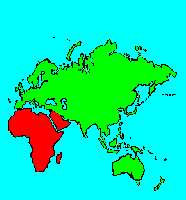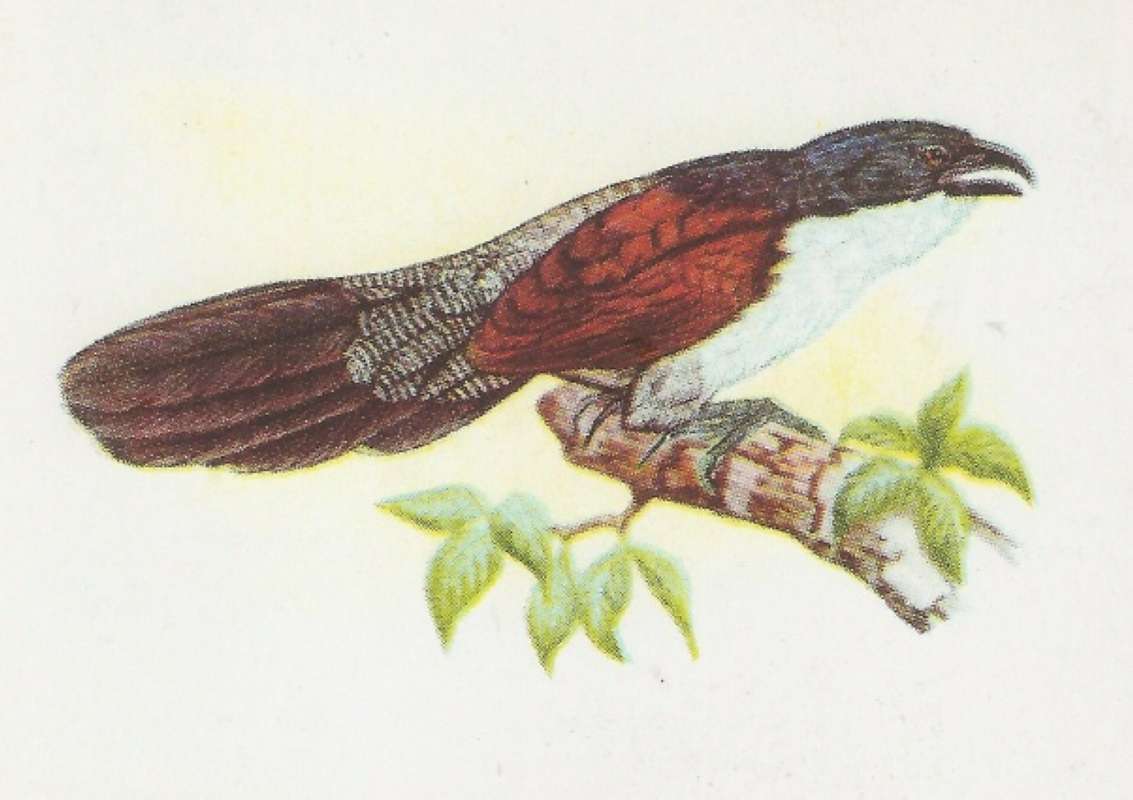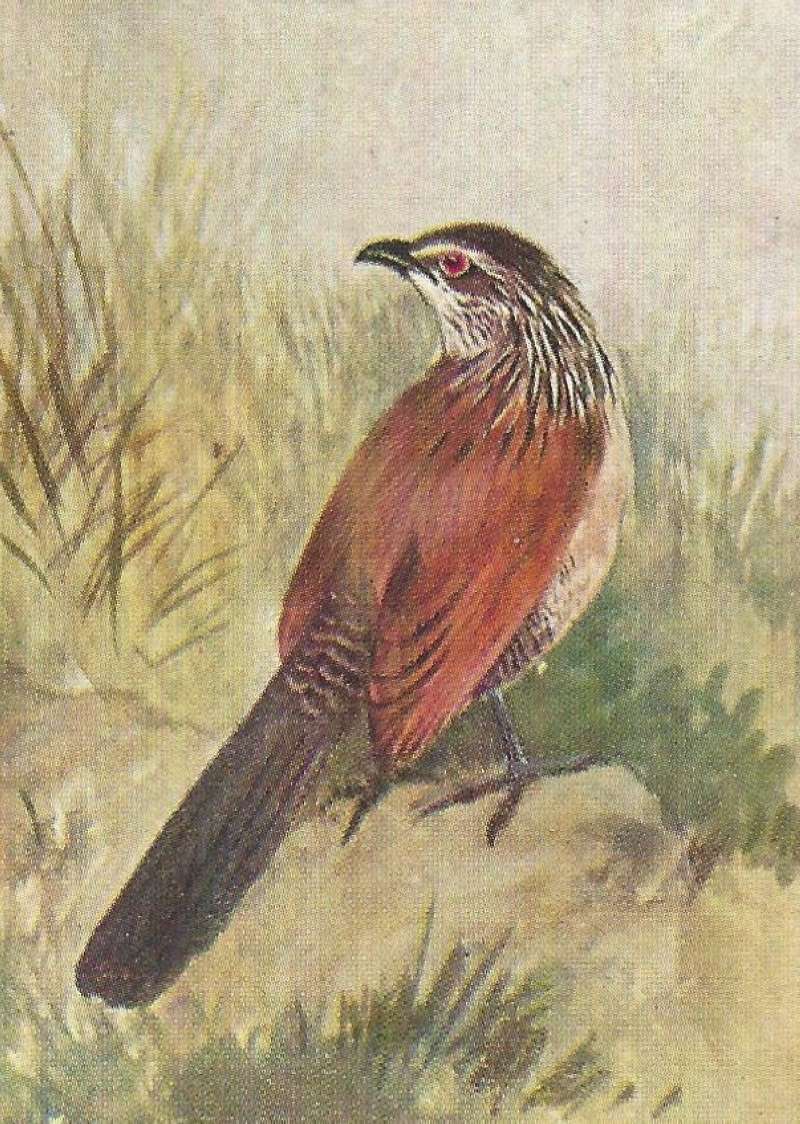SPECIES INFO
White browed coucal or Burchell's coucal (Centropus burchellii to Centropus superciliosus) is found in tropical Africa. This is found in open areas in woods, and also on semi open plains. This 16 inch coucal is truly spectacular. The front of the body including the head, throat, and upper breast is adorned with white-pale thin feathers that tend to stand away from the body. The long wing feathers are brown, and the long tail feathers are black, but tipped with white.
Clements in 2007 listed four subspecies. The nominate subspecies is found in eastern Africa from Sudan south to northern Uganda and northern Tanzania. The subspecies sokotrae is found in Arabia and Socotra Island., The subspecies loandae is found from Uganda east to Angola and south to Zimbabwe and Zambia. The subspecies burchellii is found from Mozambique south into South Africa and east into in Zimbabwe and Botswana.
(The beginning student is warned that the species name "superciliosus" is found in the Centropus genus of an African member of the Cuculidae family and in the Dasylophus genus for a Philippine member of the Cuculidae family.)The Old World coucal group contains 28 species usually placed in a single genus. The genus is Centropus.
Cuckoos (Family Cuculidae) are a family of 138 species of birds distributed widely in the warm and tropical regions of the world. Most of these species feed on insects and/or insect larvae. Larger species can feed on lizards. Many species have wide banded tails and small bills.
There has been considerable shifting of various families lately. To facilitate the study of the cuckoo group, we have divided this family into six subdivisions below:
Cuculidae - Old World cuckoos (51 species)
Phaenicophaeinae - Old World Portion (26 species)
Centropodidae - Old World Coucals (28 species)
Coccyzidae - New World Cuckoos (18 species)
Crotophaginae - Anis and Guira (4 species)
Neomorphinae - Roadrunners and Ground Cuckoos (11 species)
Cuckoos (Order Cuculiformes) are closely related to the parrots. There are several families in this order. However, some writers make this a family and reduce some of the previous families to subfamilies in the new larger cuckoo family. These are slender birds with long tails. Clements in 2007 counted 141 species in this family.
Aves contains about 8,650 different species of living birds known to science. Each year about one new species is discovered in some remote rain forest or remote island. In addition, scientists have been raising many subspecies to full species status which may raise the species count to 10,000. Birdlife recognizes 10,027 species as of 2011.
However, each year about one species goes extinct. The rate of extinction is increasing, and the rate of new discovery is decreasing, so that the number of bird species will soon begin to decline rapidly. Although different taxonomists would organize the birds differently, there are approximately twenty-seven orders of birds. These orders are broken down into about one hundred and fifty-five different families.
Recent research of the genetic structure of some of the shore birds and owls would indicate that the present organization of orders and families should have some modification.
The birds are a worldwide group of animals that are characterized by having the front limbs modified into wings that are used for flying. Perhaps the most unique feature of the birds is the feathers. These feathers are made up of a central support called a quill and a series of small filaments that are hooked together as barbs.
For many years it was believed that Archaeopteryx discovered in Bavaria was the oldest bird from about 150 million years ago. However, in l986, Sankar Chattterjee, a Texas paleontologist, reportedly discovered a bird in the genus Protoavis that lived about 225 million years ago.
When this project was begun in 1978, we used Austin & Singer for bird taxonomy. Since then, we have adopted many changes, but have kept some older concepts that are still found widely in the literature. Recently, we have used Clements and Howard & Moore. Very recently, we have used Monroe and Sibley for the higher taxonomy of the perching birds.
Backboned Animals (Phylum Chordata) are the most advanced group of animals on earth. These animals are characterized by having a spinal cord or backbone. Most members have a clearly defined brain that controls the organism through a spinal cord. Fish, amphibians, reptiles, birds, and mammals are in this phylum.
Currently, some taxonomists believe that the fish should be divided into two groups (sharks and regular fishes) and that there are some other primitive groups in the phylum such as hagfish or lampreys.
Animal Kingdom contains numerous organisms that feed on other animals or plants. Included in the animal kingdom are the lower marine invertebrates such as sponges and corals, the jointed legged animals such as insects and spiders, and the backboned animals such as fish, amphibians, reptiles, birds, and mammals.





